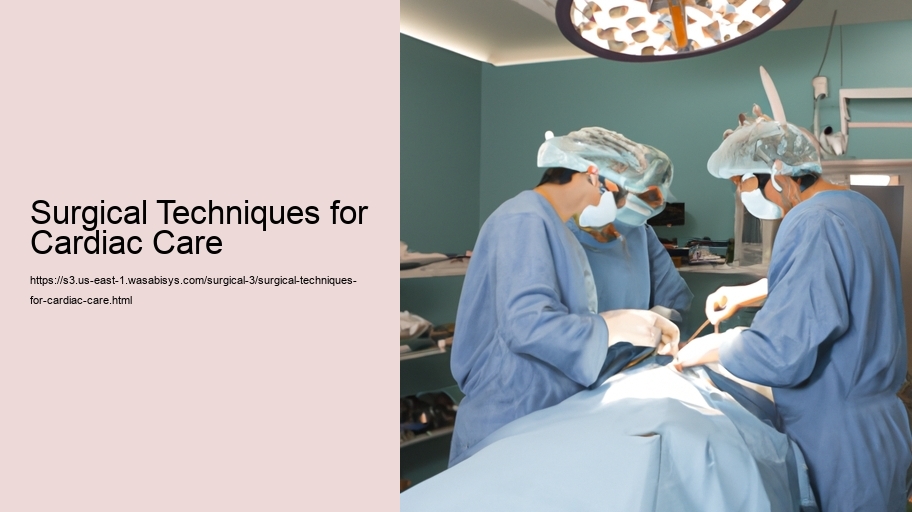Surgical Techniques for Cardiac Care: An Essay on the Evolution of Lifesaving Procedures
The heart, a symbol of life and vitality, is at the core of our well-being. As such, cardiac care has become one of the most advanced and dynamic fields in medicine. Surgical techniques for cardiac care have evolved significantly over the years, each breakthrough bringing new hope to patients suffering from heart disease. In this essay, we will explore the development of these techniques and their impact on patient care.
The history of cardiac surgery is a testament to human ingenuity and perseverance. It began in earnest in the 20th century when surgeons first dared to operate directly on the heart. One of the earliest milestones was the development of the Blalock-Taussig shunt in the 1940s, which was a palliative procedure for children with congenital heart defects. This procedure marked the beginning of cardiac surgery as a life-saving discipline.
As the field progressed, one of the most significant advancements was the introduction of the heart-lung machine in the 1950s, which allowed for open-heart surgery. This machine takes over the function of the heart and lungs during surgery, providing a bloodless and motionless field for surgeons to repair or replace heart valves, correct congenital heart defects, and perform coronary artery bypass grafting (CABG). CABG became a standard treatment for coronary artery disease and remains one of the most common and successful procedures performed today.
The development of coronary angioplasty in the 1970s further revolutionized cardiac care by providing a less invasive alternative to CABG. This procedure involves the use of a balloon-tipped catheter to open a blocked coronary artery, often followed by the placement of a stent to keep the artery open. This approach significantly reduces recovery time and has become a preferred treatment for many patients with coronary artery disease.
Another leap forward in surgical techniques for cardiac care came with the advent of minimally invasive and robotic-assisted surgeries. These procedures use small incisions and advanced technology to perform complex cardiac surgeries with greater precision and less trauma to the patient. For instance, robotic-assisted mitral valve repairs allow surgeons to operate with unparalleled dexterity, leading to better outcomes and quicker recoveries.
In addition to these technical advances, the field of cardiac surgery has seen the development of hybrid procedures that combine elements of traditional surgery with interventional cardiology. For example, transcatheter aortic valve replacement (TAVR) is a minimally invasive procedure that replaces a diseased aortic valve without the need for open-heart surgery. TAVR has become an option for patients who are considered high-risk for traditional surgery, offering a safer alternative with comparable results.
Despite these advancements, cardiac surgery continues to evolve. The emergence of tissue engineering and regenerative medicine holds the potential to transform the field even further. Researchers are working on creating bioengineered heart valves and even whole hearts using a patient's cells, which could eliminate the need for immunosuppressive drugs and the risk of rejection.
In conclusion, the surgical techniques for cardiac care have come a long way since the first tentative steps into the human heart. Each innovation has expanded the horizons of what is possible, transforming once-fatal conditions into manageable diseases. The evolution of these techniques is a journey of continual improvement, driven by a commitment to saving lives and improving the quality of life for patients with heart disease. As we look to the future, it is clear that the quest to refine and innovate in cardiac care is far from over, with the promise of even more remarkable achievements on the horizon.
